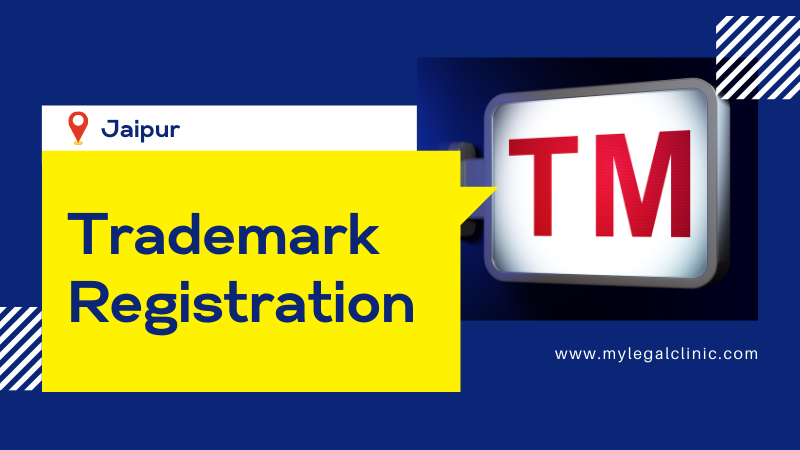

If you operate a business, you've undoubtedly heard the term "trademark" several times and have even used one for your own company. If you are new to the business and do not understand the nuances of trademark registration in India, this article will undoubtedly be of great assistance to you.
A trademark is a unique symbol or sign that is used to represent your business. Over time, your company's name becomes intertwined with the trademark sign or emblem. People do not need to read the brand names. They only need to look at the logo to identify you. Assume when you look at the sign of a half-eaten apple, you can recognize the brand Apple without reading the details of the brand name.
The legal embodiment of "intellectual property" is the company's trademark. It might be a sign, a symbol, a series of alphabets, a word, a design, a picture, or anything else. It distinguishes the brand and its product and represents it in the marketplace.
Once registered, that same logo, sign, or sequence of letters cannot be used by any other organization, as long as it is in use and the necessary papers are submitted, and costs are paid.
The Trademarks Act of 1999 enables business owners to register a variety of trademarks to protect their company's emblems from rivals. Trademark registration is essential when a company wants to protect its logo or symbol from being exploited by a competitor or other third-party company.
It enables you to use your logo for advertising your services and developing your image. Once your logo has been registered as your trademark, no other business will be permitted to use it for their services, and if they do, legal action will be taken against them, and they will be penalized.
They are one of the most regularly registered trademarks in India. If your company's trademark is restricted to simply text or a series of alphabets, it will be registered as a wordmark. They are often utilized for advertising the businesses of trading companies or service providers.
Example: Nestle
Service Marks portray the services that the company provides. The primary function of a service mark is to differentiate its proprietors from the owners of other companies. Trademark applications submitted under trademark classes 35-45 may be classified as service marks since they represent a service.
Example: FedEx
Figures, pictures, icons, characters, or designs are elements of logos or symbols. They can be printed or hand-painted. They represent the company's services or products and stand for the brand name. It contains no digits, alphabets, or words. If a wordmark is also used as a logo, the trademark must be registered as both a wordmark and a device mark. Both of these components can be registered in a single application form in India.
Example: Apple
These trademarks identify individuals from the same community, business, organization, association, franchise, governmental institution, or Section 8 company. A group of people could use this trademark to represent a product or service collaboratively.
So, collective trademarks do not represent a single product or service. Instead, they can be used by all organization members that own the trademark to represent if they are a part of the company.
They are "Badges of Origin," which identify the exact source of the individuals, their products, and services. Normally, the criteria of the items in a collective mark are set by the authority who owns the mark. Others in the group are held accountable for adhering to particular criteria while using the mark in the course of trade or business.
Example: All the chartered accountants registered to the Institute of Chartered Accountants can use the collective mark "CA."
The series marks have a common syllable/prefix/suffix in the names of the company's products, indicating a collection of trademarks with a 'common name.' Products with series marks from one organization will have distinctive characteristics based on pricing, quality, size, and so on.
Example: McDonald's has a series of 'Mc' registered food products such as Mc Chicken, McVeggie, etc.
The certification mark certifies that the company's products have achieved the required standards and quality levels. This will inform the public that the company's product has met the requirements set by the certifying authority. It is used to promote the brand reputation and demonstrate that the firm has undergone testing to ensure the quality of the goods. It increases the company's trustworthiness. Typically, certification marks may be seen on packaged goods, toys, and gadgets.
Example: Woolmark certifies that a product is manufactured from 100 percent wool
The shape of products is classified as Trade Dress (product appearance), and an item can be differentiated based on its packaging in addition to a trademark or labeling.
Example: The brand Coca-Cola distinguishes its product from the others based on the shape of the bottle.
Geographical indicators are adopted as trademarks when the items have some significance, uniqueness, or specialization depending on their place of origin. The GI Registry provides the Geographical Indicators (GI) to natural, agricultural, industrial, and handicraft products with a defined geographical origin.
Example: Darjeeling Tea
Pattern marks are applicable for the items with distinctive designed patterns that serve as the product's defining characteristic. A design must demonstrate its originality to be registered.
Example: The patterns of "diamonds" or "flower-arranging."
If you're looking forward to trademarking your assets, you can contact us. Using our expertise and experience, we can also make the process of trademark registration seamless.
A thorough trademark search should be conducted to confirm that no other company has similar trademarks. You should never, ever miss this stage, no matter how amazing your concept is. It will protect you against any chances of trademark litigation in the future. Proceed to the following stage after you are confident that your trademark is unique and original.
After determining that your trademark is not already registered in the Trademark Registry in India, you should immediately fill out the form of trademark application available on the official website of the Trademark Registration in India. Nowadays, the majority of business people choose to perform their operations online. When you apply, you will be given an official receipt for future reference.
The application for trademark registration is examined for about 12 to 18 months, after which the examiner may approve the trademark unconditionally, conditionally, or objectively.
If the trademark is approved unconditionally, it is published in the Trademark Journal. If not approved unconditionally, the requirements to be met or the concerns raised should be included in the assessment report, and usually, a month is allotted to meet the criteria or respond to the concerns.
The trademark is published in the Trademark Journal whenever such a response is approved. If still not accepted, a hearing at court can be requested. If the examiner believes that the trademark should indeed be registered after the trial, it is published in the Trademark Journal.
Following the examination procedure, the Registrar of Trademarks will publish your brand name in the Indian trademark journal. The step of publishing is included in the trademark registration process in India so that anybody who opposes the registration of the trademark can do so.
This is perhaps the most crucial aspect of trademark registration, and if there is no opposition within 3-4 months after publication, the Registrar of Trademarks will issue the Trademark Registration Certificate. If there is an objection, the Registrar holds a fair hearing and makes a decision.
Now, a registration certificate bearing the Trademark Office's seal is issued once the application for trademark registration has been processed. The trademark can be renewed indefinitely after every ten years.
If you are interested in obtaining a trademark for your product or service, please feel free to contact us. Our consultation fees are very reasonable. We ensure seamless Trademark Registration in India for our clients.
It's always good to register your trademark to protect it against unlawful usage by others. You can enhance your entire business performance, credibility, recognition, and market capitalization in the industry by registering a trademark in India. It will boost your brand value and help in brand awareness.